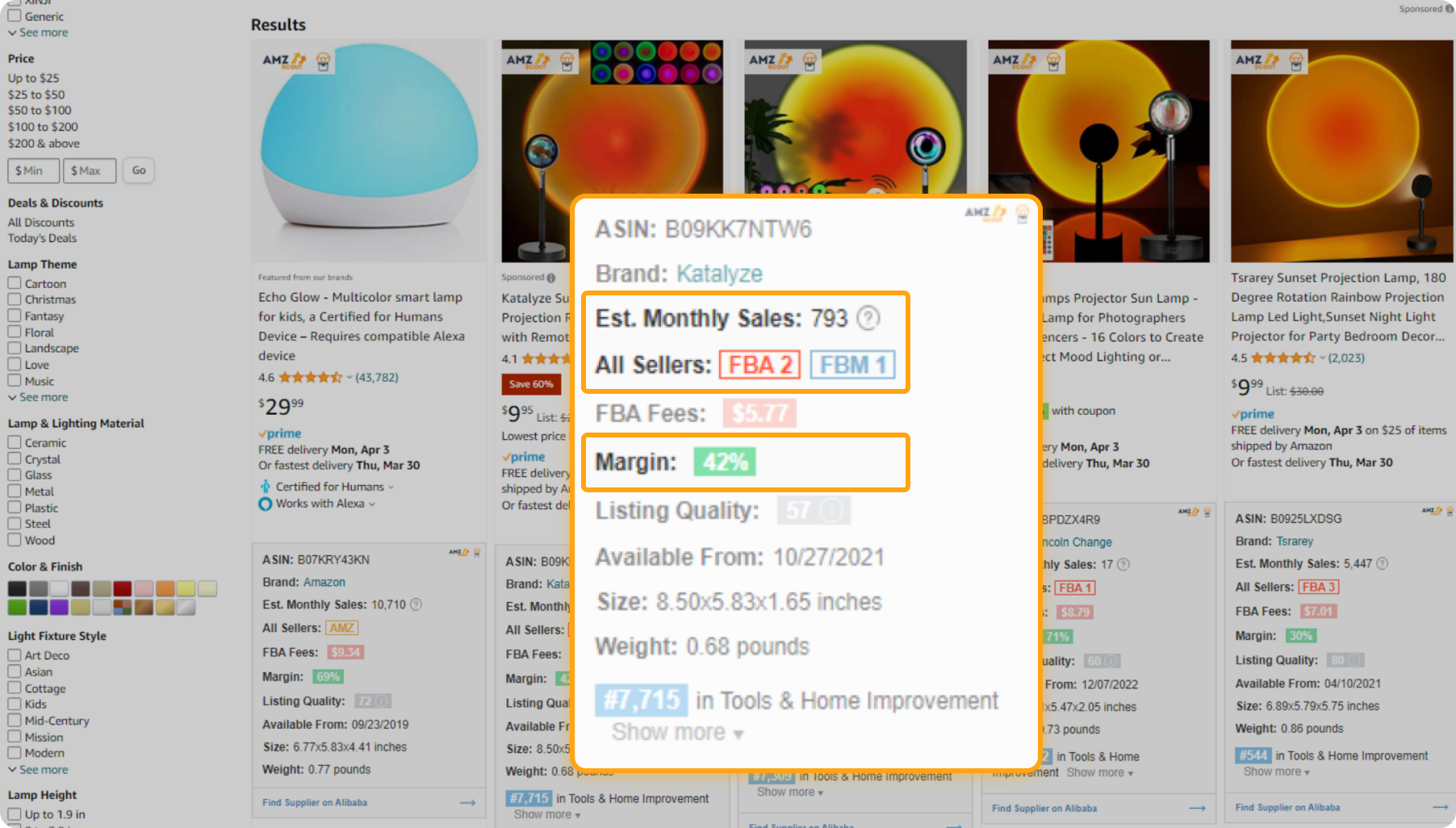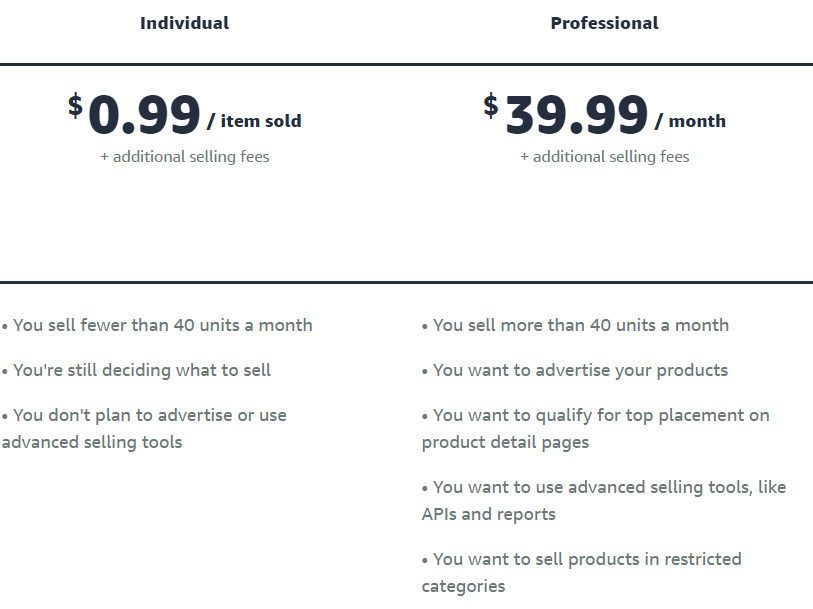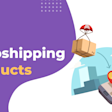
How Dropshipping on Amazon and eBay Works
Amazon and eBay are two of the most popular online marketplaces. They are home to millions of customers and hundreds of millions of products. With so many items, each market can be a great place to source products. Many sellers use the two sites to drop ship goods to other platforms. This could be another marketplace or an eCommerce site hosted on a platform like Shopify.
In this post, we’ll look at how dropshipping between Amazon and eBay works and give you some tips for finding profitable products to sell.
Table of contents
What’s Best for Dropshipping - eBay vs Amazon?
When it comes to eBay vs Amazon, both have their strengths for selling dropshipped products. Let’s examine these further.
Advantages of Selling on Amazon
Easy to get started: With Amazon, it’s easy to start selling. It only takes a little bit of time and some brief information to create an account. Once you’re registered, you can instantly create an offer for one of the hundreds of millions of items already on the marketplace.
Huge audience and marketing opportunities: We don’t need to tell you that Amazon is massive. It’s the largest eCommerce site in the world, making it the best place to sell products. The platform also affords several great marketing opportunities. You can get your products in front of customers by ranking via SEO. Or, you can run paid ad campaigns to gain even more exposure.
Robust fulfillment service: Amazon makes it easy to fulfill orders with its Amazon FBA logistics service. With it, you send Amazon your goods for them to store. When someone places an order, Amazon will pack and ship the products. FBA shipments usually have 1 or 2-day Prime shipping.
eBay advantages for sellers
Fewer restrictions: eBay has fewer restrictions than Amazon. With Amazon, 12 of the product categories are gated, meaning you need approval to sell. eBay doesn’t have gated categories and it’s easier to list used and homemade items.
Less competitive: With fewer sellers, most categories are less competitive on eBay. This gives you the opportunity to get more exposure to your products.
Low fees: eBay does not charge any subscription fees for sellers. You’ll have to pay Final Value fees on sales, but these are usually lower than the Amazon referral fee for selling the same product.


Is Dropshipping Legal on eBay and Amazon?
Yes, dropshipping is legal on eBay and Amazon. Both marketplaces state in their policies that you are allowed to dropship products to your customers. That said, there are conditions that you need to know as a seller.
On Amazon, you must do the following:
Be the seller of record for your products.
Identify yourself as the seller on all packing slips
Take responsibility for processing customer returns of your products.
Comply with all other applicable Amazon policies.
Dropshipping from eBay to Amazon is tricky with these requirements. If you were to order something from eBay, the seller you bought from wouldn’t list you as the seller on the packing material by default.
Dropshipping Amazon to eBay is even more tricky.
While eBay does permit dropshipping, it updated its policy a few years back to explicitly state that dropshipping from another marketplace (like Amazon) is forbidden.
If you decide to dropship from Amazon to eBay you must ensure it doesn’t seem like your products are coming from Amazon.
How to Find the Best Items to Dropship on Amazon and eBay
The key to successfully dropshipping on either platform is to find the right product. Below are the steps to find the best items using powerful dropshipping software:
1. Install the Online Arbitrage and Dropshipping extension. Click the link to set up the browser extension.
2. Start your free trial. You will need to enter information to create an account, but do not need to provide credit card details.
3. Search Amazon for product ideas. Go to the Amazon marketplace and look for a niche. It could be:
Categories you are passionate about
Items trending on other sites or physical stores
Products sold by your dropshipping supplier
4. Rank your product ideas. Go through the Amazon search results and check the data below each product. The Online Arbitrage and Dropshipping extension will show you:
Profit margins and potential earnings (save any products with margins over 50%)
Amazon fees for referring sales or using FBA logistics
Seller types (look for products with both FBA and FBM sellers. Avoid products with Amazon sellers as it is hard to win the buy box)
Take note of items that look interesting while meeting these characteristics. You can then evaluate them further.
5. Check your prioritized products. Go to each product page. There, you’ll see a built-in window with key details about the product. Check if it is private label, ungated, or if it has hazardous materials. You also want to see if it is in a restricted category.
6. Check the product’s historical data. Once you’ve reviewed the key information, look at the Buy Box history and Price history. These show price changes over time so that you can develop the best pricing strategy to win the Buy Box.
7. Check the product’s profit potential. Use the calculator to enter your costs. These will depend on your business. They can include:
Shipping costs (how much you’ll pay your supplier to ship your goods)
Advertising costs (how much you spend on Amazon PPC campaigns)
Other costs (how much you pay for third-party tools and other services)
The app will automate the profit calculation by showing your sales margins based on your data. There will be new numbers for Profit Margin, Minimum Net, and ROI fields. Review these to see if the item is profitable to sell.


Other Things to Look for When Analyzing a Product
Below are some other important factors you should check. These will tell you how easy it is to resell a product. You can check these using AMZScout’s Online Arbitrage and Dropshipping extension:
If it is a private label product. Private label items are sold by a unique brand owner. Sourcing this product via dropshipping is likely impossible as the manufacturer makes it exclusively for them.
If the item contains hazardous materials (hazmat) or is in a gated category. Either of these two traits will make the product difficult to sell. Selling in gated categories requires approval from Amazon while hazmat items may require extra certifications.
If the item has Prime shipping. As a dropshipper, you’ll have slower delivery times. This makes it hard to compete on listings with fast 2-day Prime shipping.
How Does Drop Shipping Between eBay and Amazon Work?
Below are the steps on how to get started dropshipping between Amazon and eBay:
Dropshipping From Amazon to eBay
1. Set up an eBay seller account. Before you can sell products on eBay, you’ll need to create a seller account. This is a relatively simple process. You need to provide personal and business information and then create your shipping and return policies.
2. Create eBay listings. Once your account is set up, you can begin creating product listings. This is another quick and easy process as you don’t have to wait on eBay to allow you to list your items. You’ll provide key details like category, specifications, and images. eBay charges “Insertion fees” to list products but you can list up to 250 for free.
3. Market your products. To make money on eBay you’ll need to market your products. There is a built-in advertising platform where you can quickly set up a promotion for your items. Over time, you’ll also be able to rank at the top of results via SEO.
4. Buy products from Amazon. When a customer orders your eBay products, you’ll then need to buy them from Amazon. This is a simple process but will require you to create an Amazon account if you don’t already have one.


Dropshipping From eBay to Amazon
1. Create Amazon Account. To start dropshipping products on Amazon, you’ll need a Seller account. You can create an account by providing personal and business information and completing an address verification. Amazon has free seller accounts for individual sellers and professional accounts for people selling more products. The professional account has a $39.99 monthly fee.
2. Create product offers. Next, you’ll need to create your offers for your products. Assuming the products are already on Amazon, you will not have to worry about populating the listing yourself. Each product has one listing which all sellers compete for. You will however need to set a price and quantity for your offer. Because you’ll be listing dropshipped items, you’ll have to select FBM as the fulfillment method.
3. Market your products. After you list your products, you’ll need to get them in front of visitors. The best way to do this is through Amazon ads. With these, you can have your products shown at the top of search results. You’ll then pay a small fee each time someone visits the product.
4. Buy your products from eBay. When someone places an order on Amazon, you’ll then go to eBay to buy the product, using the customer’s address for the shipping details. You’ll need to create an eBay account to make the order.
Conclusion
Dropshipping can be an effective way to source products. This guide on Amazon eBay dropshipping has shown you how the process works and how you can find the best items to dropship on either marketplace.










